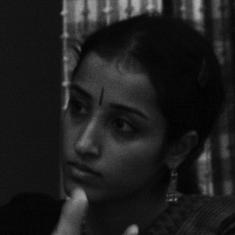Mamata Banerjee made the correct decision to release 64 hitherto closed historical files held by the West Bengal government to the public. There is an urgent need for a proper archives policy in our country as is the case in well-functioning democracies of the world. Most government files should be thrown open after 25 or 30 years and all files after the lapse of 50 years. The central government should declassify forthwith all old files that are still under wraps. The argument about relations with foreign governments being adversely affected is a specious one. Churchill’s government had ordered the assassination of Subhas Chandra Bose in 1941. We do not hold Cameron’s government responsible for that decision.
The 64 files opened by the West Bengal government confirm what had been revealed in two files available in the National Archives earlier this year. For more than two decades after freedom, the post-Independence governments of India and West Bengal were snooping on freedom-fighters, including members of the Bose family, in clear violation of the privacy of law-abiding citizens. File number 63, for example, contains a letter written by Sisir Kumar Bose in Kolkata to his aunt Emilie Schenkl, Netaji’s widow, in Vienna dated June 1953 and other evidence of intrusive surveillance that continued until 1972. The media has already highlighted the report on an intercepted letter from Emilie to Sarat Chandra Bose in 1946 expressing her sense of shock at Netaji’s death in the August 1945 air crash. But that was before Independence; the colonial tradition of opening letters in the Elgin Road post office continued in the post-colonial era.
What the files reveal
The recently declassified files contain nothing substantially new about Netaji. In any case, history is not about what one police informer says to another. It is part of their job to report rumour and speculation, and sometimes freedom-fighters successfully fed them deliberate disinformation as Sarat Chandra Bose did in January 1941 to cover the trail of Netaji’s great escape. Well-trained historians know how to read colonial sources – the prose of counter-insurgency, in Ranajit Guha’s words – against the grain and between the lines. The files throw no new light on either the life or the mortal end of a deathless hero. I had quoted an intelligence agent in my book His Majesty’s Opponent who wrote in February 1946 how anxious they were to know that Netaji was “actually and permanently dead” (War Office File No. 273 in The National Archives of the United Kingdom). Files containing the same materials, classified in Delhi and Kolkata, have been open for quite some time now in London.
Just as Netaji’s admirers hoped he was alive, some of his detractors in the government may have feared his return. One or two recently opened files contain reports of speculation from the late 1940s that he may still be alive at that time as there was scope for doubt for at least a decade after 1945. The eye-witness testimonies of the air crash at Taipei were systematically collected by the Shah Nawaz Enquiry Committee in 1956. There is strong historical evidence that Netaji laid down his life fighting for his country’s freedom on August 18, 1945. Nothing can be more insulting to his memory than to turn him into some obscurantist baba or other.
It is a misnomer to describe the just-released documents as the Netaji files. I have read thousands and thousands of Netaji files in various archives, in addition to the treasure trove of all of Netaji’s letters, writings and speeches collected painstakingly at the Netaji Research Bureau since the 1950s. There are two points to be made about the relatively small number of files that are still closed. First, they should all be thrown open without any further delay. That is the only way to stop the propagation of fantasies as facts. Second, there needs to be an understanding that these files may not contain anything of real substance about Netaji and could only reveal a few dishonourable things done by some in the upper echelons of India’s post-Independence government. I hope the younger generation will choose to learn from Netaji’s book of life that was more fascinating than the legend.
Appropriating Netaji's legacy
A final word is in order about the question of family and political misappropriation of Netaji’s legacy. Netaji was one of 14 siblings and so his extended family is quite large. He had one daughter, my aunt Anita, who lives in Germany. Netaji himself always said his family and country were co-terminous. So anything to do with him should be treated as a national issue and not a family matter. This is exactly what I said in Parliament last April when addressing the question of the declassification of files. I received support across party lines when I said that in dealing with this sensitive issue we must be respectful towards all three iconic leaders of the freedom struggle – Gandhi, Bose and Nehru – who may have differed on occasion, but also shared a deep bond of mutual affection and admiration. It is not necessary to do down one to honour another.
The media needs to do due diligence in checking the individual qualifications, credentials and antecedents of so-called family members. Those making wild allegations without an iota of understanding of history should not be given any credence. Without genuine individual accomplishment, family membership counts for nothing. It is odd that Narendra Modi, who keeps his own family at arm’s length, should be so keen to be seen rubbing shoulders with certain members of Netaji’s extended family. I had heard he was opposed to family-based politics. Some political parties have tried to appropriate Netaji by distorting what he really stood for. Netaji’s greatest contribution was to unite all the religious communities by winning the absolute trust of the minorities. The best way to honour Subhas Chandra Bose today is to live up to that great ideal.
Sugata Bose is Subhas Chandra's Bose's grand nephew and a member of Parliament.










